How 2 doting dads, George Floyd and Nicholas Farah, died in the hands of police
Nicholas Farah and George Floyd both died handcuffed while in police custody.
Eric Farah says that had his brother and George Floyd ever met they might have been surprised to learn how much they were alike.
Despite his brother, Nicholas Farah, 36, being white and from a Wisconsin town near Lake Winnebago and Floyd, 46, being a black resident of Minneapolis, a metropolis of 429,000 people, there were some common threads that ran through both of their lives, he said. They were described by loved ones as doting fathers to their young daughters. Both were raised in strongly religious households and both were said to be guys who would "give the shirt off their back" to help their friends.
And as Eric Farah and his family have watched protests and outbreaks of violence erupt across the nation in recent weeks in the wake of Floyd's death, they say they've been well aware of a painful commonality, one acutely connected to the frustration exhibited in the demonstrations.
Autopsies concluded that both men died a little over a year apart as the result of homicide while in police custody, each succumbing to traumatic positional asphyxiation, a problem that has haunted law enforcement agencies for years.
In 1995, a U.S. Department of Justice newsletter warned law enforcement agencies that "unexplained in-custody deaths are caused more often than is generally known by a little-known phenomenon called positional asphyxia."
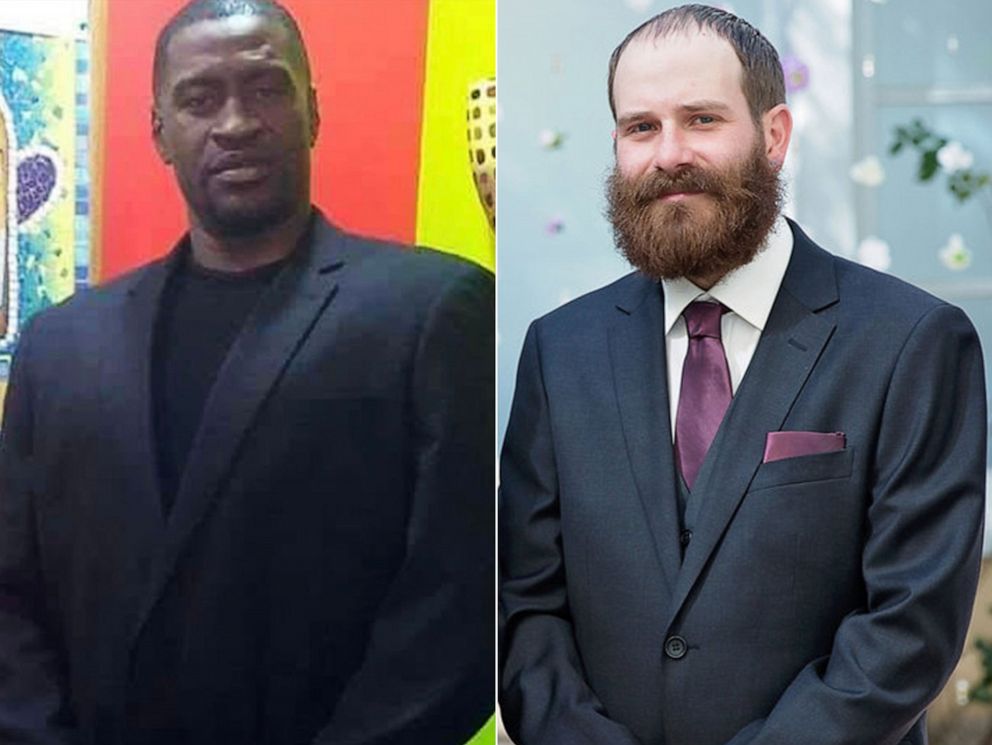
"We offer this information to help officers recognize factors contributing to this phenomenon and, therefore, enable them to respond in a way that will ensure the subject's safety and minimize risk of death," the newsletter reads. It goes on to advise, "As soon as a suspect is handcuffed get him off his stomach."
Yet more than two decades later, both Floyd and Farah literally had their breath snatched away with their hands cuffed behind their backs while being aggressively restrained after taken into custody on suspicion of relatively minor offenses. Farah's death went largely unnoticed, but Floyd's, the latest in a string of black men killed at the hands of police and captured in excruciating detail on video, sparked national outrage and wide-ranging calls for reform.
Floyd was accused of using counterfeit money to buy cigarettes in Minneapolis on May 25. A viral bystander video showed an officer, Derek Chauvin, kneeling on the back of his neck as Floyd, face down on the pavement, begged for life, called out for his dead mother and repeatedly said "I can't breathe" until he became unresponsive.
Floyd's killing came less than six years after Eric Garner, who New York City police confronted for selling untaxed cigarettes on Staten Island, was placed in a banned chokehold by one of the officers and repeatedly pleaded "I can't breathe" until he was rendered unresponsive face down on a sidewalk. He, too, later died at a hospital.
While data on similar deaths in police custody is murky and reformers have called for it to be aggregated and released, an ABC News review found a number of instances in recent years that bear eerie similarities to the Floyd and Farah cases, including a number where the victim says "I can't breathe," despite laws and rules that guard against such tactics.
The deaths cut across racial lines and experts say that they mark deep-rooted problems of aggression in the culture of policing. The circumstances and details of each incident may vary greatly, including those in the cases of Farah and Floyd, but one underlying cause -- or contributing cause -- of death is consistent: positional asphyxiation.
"The police are there to serve and protect everyone. During my brother's case, they weren't serving and protecting. They weren't protecting his well-being," Eric Farah, 34, told ABC News. "Again, same with George Floyd's case. They weren't protecting his well-being. He has a family as well. They didn't do everything possible to make sure that they were taking the safe measures and making sure that they were contributing in the right way."
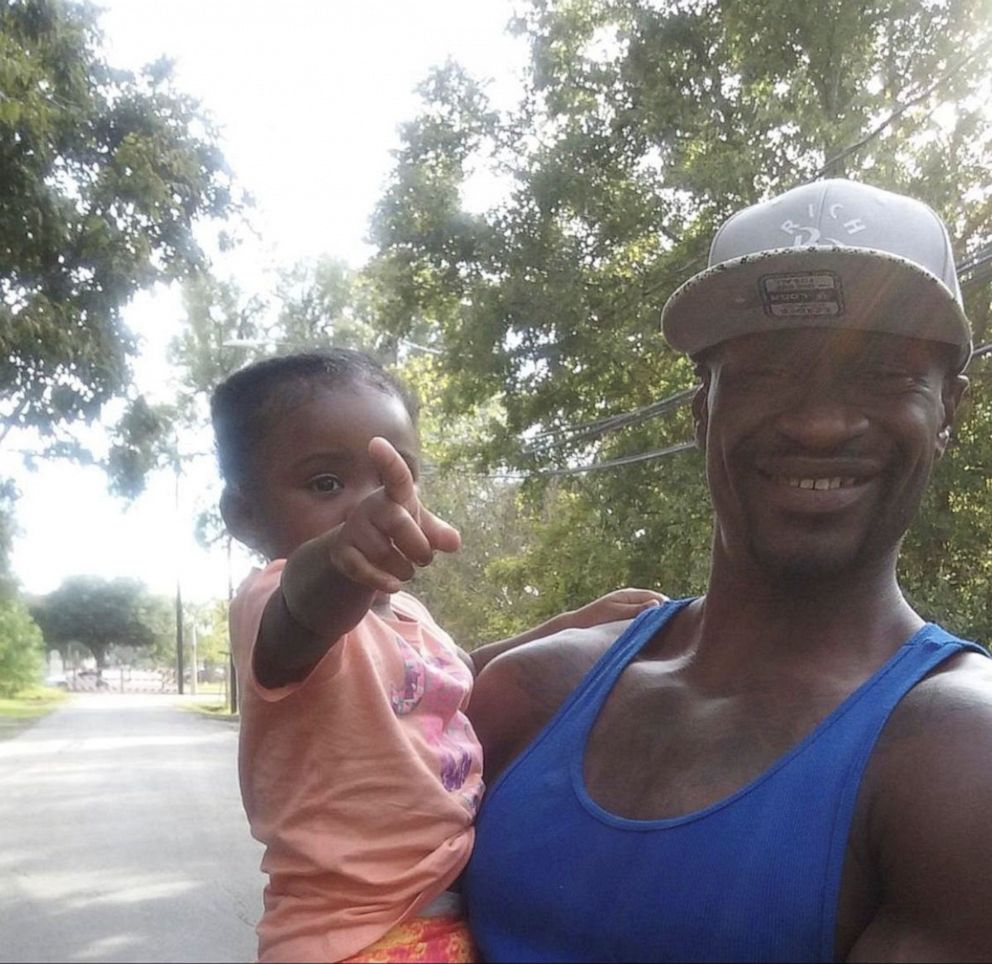
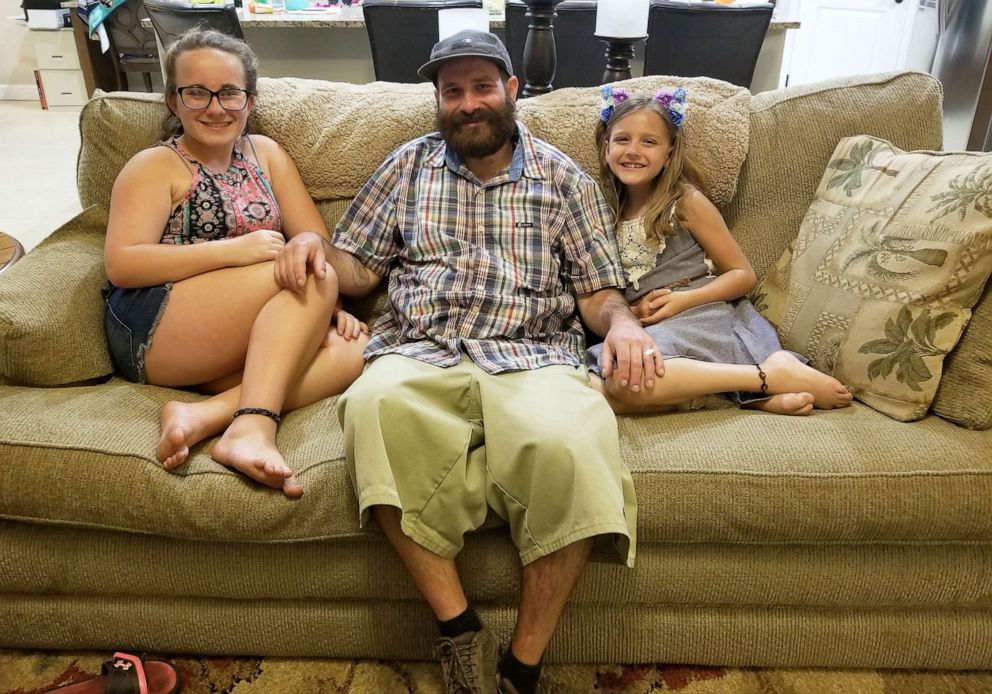
From a 'disturbance' to death
In Farah's case, police responded to a "disturbance call" at a hotel in Las Vegas on March 31, 2019, and ended up arresting him and taking him to the Clark County Detention Center. Jail video showed the 5-foot-6, 156-pound Farah appear to tense up and struggle, saying "don't" and "quit" as he was being removed from a patrol car, pushed against the vehicle and searched.
Four officers, including two corrections sergeants, could be seen forcing him into a restraint chair. His head was pushed down between his legs and he was held by the back of his neck for 75 seconds as the officers pulled his hands up behind his back to replace a pair of handcuffs with another. Farah then went silently limp and medical personal standing by noticed he was in distress, according to an investigation report provided to ABC News by the Las Vegas Metropolitan Police Department (LVMPD). He was taken to a hospital and pronounced dead.
The Clark County medical examiner ruled Farah's death a homicide, resulting from "asphyxia during restraining procedures, methamphetamine intoxication and obesity."
It remains unclear if any of the officers involved in Farah's death have been disciplined. An LVMPD official told ABC News that the department "does not release administrative discipline information."
LVMPD officials have since made a series of changes in policy regarding the use of restraint chairs, including forbidding suspects or inmates to "to be bent over to either change handcuffs or reposition them," a department spokesperson said.
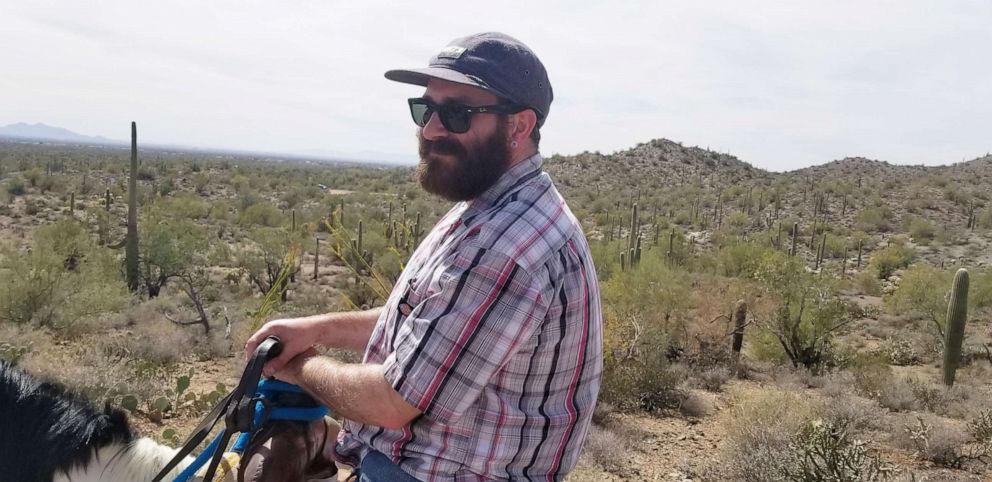
Sarah Grady, an attorney representing the Farah family in a federal wrongful death lawsuit against the Las Vegas police, said it remains unclear if there was even probable cause to take Nicholas Farah into custody.
Farah, who lived in Appleton, Wisconsin, and worked in a meat market there, was returning home from a family vacation, in which he and his loved ones, including his two daughters ages 14 and 10, went on a cruise to Ensenada, Mexico, and spent three days at Disneyland, his brother said.
Farah's brother said that on the way back home, he got separated at Los Angeles International Airport from his family and missed his flight. He caught another flight that had an eight-hour layover in Las Vegas.
At some point after landing in Las Vegas, he ended up at a local hotel, where he told a staff member that he'd just been robbed and asked her to call the police, according to the LVMPD investigative report. An employee eventually called the police again, complaining that Farah was refusing to leave the lobby and appeared intoxicated.
A portion of police body-camera video played for reporters at a news conference in 2019 showed two officers initially responding to the hotel and cordially speaking with Farah, telling him the business didn't want him on the premises and asking him to go with them to a nearby patrol car. Farah refused to provide his name or answer any questions, according to the investigative report.
But when Farah hesitated, the officers grabbed hold of his arms, led him to the patrol car and searched him. Farah allegedly "became more aggressive and began to pull away from the officers," according to the report. One officer told him, "Don't be stupid right now," the body camera video shows.
"After he gets in the car, one of the officers does report to his supervisor that no force was necessary," said Grady, a detail that was confirmed by the LVMPD investigation report.
Eric Farah said it was shocking to see how quickly his brother's situation escalated and led to his death.
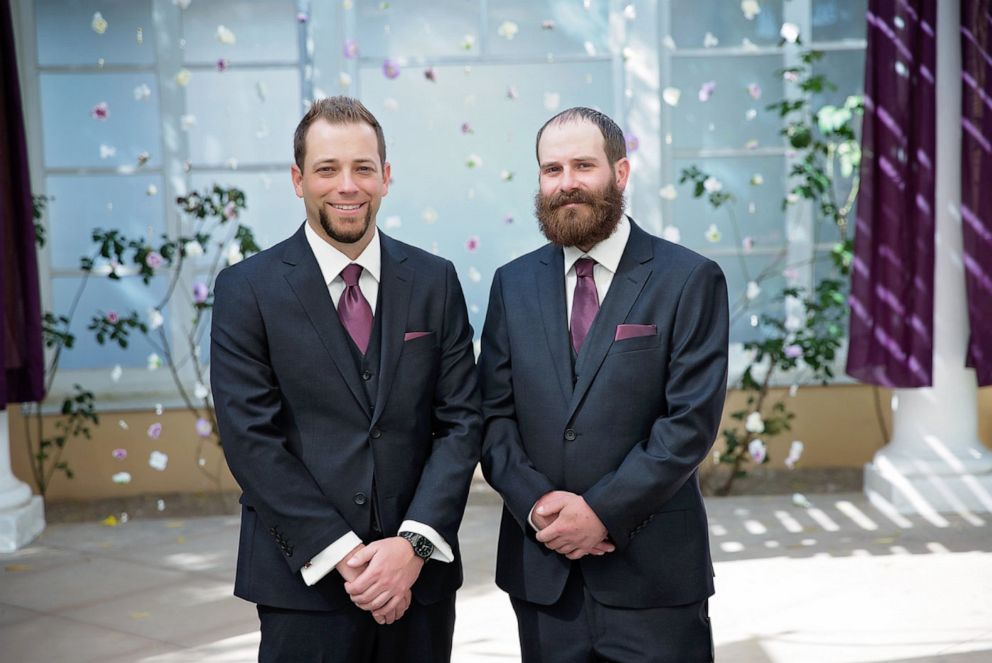
"They took the strongest measures possible to immediately go there and for a guy of his size to say that he was being combative where he wasn't manageable was very frustrating," Eric Farah said.
History repeating itself in Minneapolis
When he watched the video of George Floyd's arrest, attorney Bob Bennett said he felt it was almost a repeat of the footage he viewed nearly a decade earlier.
"It seemed like I was watching the same thing happen again," Bennett told ABC News.
Bennett represented the family of David Smith, a 28-year-old man who suffered from a bipolar disorder and depression and died after being taken into custody by two Minneapolis police officers on Sept. 29, 2010. The officers responded to a complaint that Smith was at a YMCA in Minneapolis acting strangely.
After arriving at the facility, two police officers found Smith on the basketball court and a struggle ensued after the officers confronted him. In an interview with ABC's "Nightline," Bennett said that Smith was on the autism spectrum.
It seemed like I was watching the same thing happen again.
"So he didn't like to be touched. And the officers came and immediately grabbed him and the fight ensued from there," Bennett said.
Smith attempted to run, but one of the officers deployed a stun gun on him. A lapel camera one of the officers was wearing showed the two officers forcing Smith face-first to the ground and handcuffing him, one putting his knee in Smith's back between his shoulder blades.
About seven minutes after being held on the ground, Smith became unresponsive. He died a week later in a hospital. An autopsy showed Smith died due to "mechanical asphyxia" caused by prone restraint.
Neither officer was charged in the incident. In May 2013, the city of Minneapolis agreed to pay Smith's family $3 million to settle a lawsuit and received a promise from the police department that all officers would be trained on the dangers of positional asphyxia.
Bennett said the Minneapolis Police Department has had a policy governing the use of prone restraint since May 2002. In part, the policy reads, "When any restraint technique is used on a subject, the subject shall not be left in the prone position and shall be placed on their side as soon as they are secured. Once a person is secured an "officer shall watch for any of the following signs: significant change in behavior, or level of consciousness, or irregular breathing, seizures or convulsions."
"They just don't learn and they just don't care. That's the problem," Bennett said when asked why such incidents keep occurring.
Data on in-custody deaths remain murky
The number of people who die in police custody annually remains murky, making it difficult to detect patterns in the hundreds of thousands of arrests made by U.S. law enforcement each year.
In a 2011 report, the federal Bureau of Justice Statistics tallied 4,813 people who died between 2003 and 2009 during or shortly after law enforcement personnel attempted to arrest or restrain them. About 60% of arrest-related deaths were classified as homicides by law enforcement personnel and 40% were attributed to other manners of death including suicide, intoxication and accidents.
According to the report, 42% of the deaths were white, 32% were black and 20% were Latino -- out of proportion with the racial breakdown of the population as a whole.
While Congress enacted the Death in Custody Reporting Act (DCRA) of 2014, the U.S. Department of Justice has yet to make public data on people who have died while being apprehended, arrested or transported by law enforcement officers, including a racial breakdown on civilians who die in police custody and the manner to which such deaths occur, according to a June 7 report by the Shorenstein Center on Media, Politics and Public Policy at Harvard University.
The FBI has also not released the use of force data it has been collecting from police departments around the country, which it has been doing since January 2019. The bureau has said it will begin releasing the data this summer.
In a Jan. 27 letter to Inspector General Michael Horowitz of the Department of Justice, Rep. Jerrold Nadler, D-New York, chair of the House Committee on Judiciary, and Rep. Karen Bass, D-Los Angeles, chair of the House Subcommittee on Crime, Terrorism and Homeland Security, emphasized the importance of such information in light of recurring instances of people being killed by police while in custody.
"In the absence [of] action by the Department, the United States continues to face a persistent crisis of deaths in custody, the true scope which remains unknown," the letter reads.
Haunting similarities
Multiple people have died in police custody from positional asphyxia in the past decade, well after the warning in the 1995 Department of Justice newsletter and continuing to raise questions why apparently little progress has been made in preventing such deaths. Among the cases that have made national headlines are:
-- Antonio Valenzuela, 40, who died Feb. 29 after Las Cruces, New Mexico, police officer Christopher Smelser allegedly put him in a banned vascular neck restraint, or chokehold, causing him to asphyxiate while being held in a prone position, police said. The incident, which was ruled a homicide by a medical examiner, unfolded after Smelser stopped a truck Valenzuela was a passenger in as part burglary investigation, according to police. After questioning Valenzuela, Smelser learned he had a warrant for a parole violation and that's when Valenzuela bolted. Following a brief foot chase and deploying a stun gun on Valenzuela, police took him to the ground leading to the deadly outcome, officials said. Smelser was fired from the police department and charged with involuntary manslaughter. Smelser has not yet entered a plea.
-- Sterling Higgins, 37, died on March 25, 2019, after being arrested for trespassing at a store in Union City, Tennessee. He was taken to the Obion County Law Enforcement Complex. His hands were cuffed behind his back, but officials allege he assaulted an officer, prompting police to wrestle Higgins to the floor, according to their statements and jail security video released by authorities. The video appears to show officers holding Higgins down in a prone position. One officer is seen in the video pressing Higgins' head against the floor with his hands on his neck and another standing on Higgins. Once Higgins appeared to lose consciousness, the officers strapped him in a restraint chair and wheeled him into a room, where he was left for roughly 15 minutes before paramedics arrived and pronounced him dead. An autopsy report, obtained by ABC affiliate WSIL-TV in Memphis, shows Higgins died of "excited delirium due to methamphetamine toxicity" and that he suffered from positional asphyxia as well as blunt-force trauma to the neck, head and torso. The case was presented in October to a grand jury that declined to indict any of the officers involved in Higgins' death. Higgins' family has filed a $10 million wrongful death lawsuit.
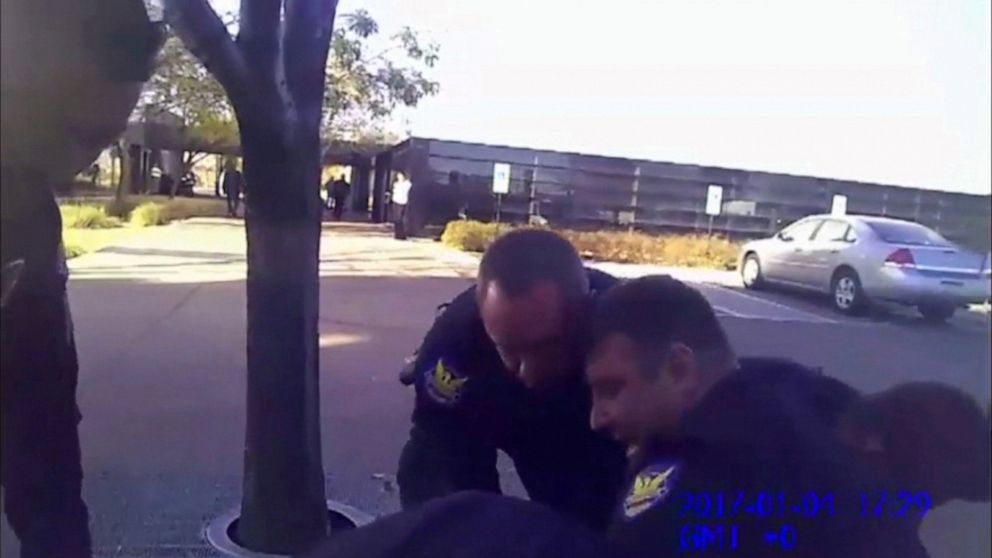
-- Muhammad Abdul Muhaymin Jr., 43, a homeless man, died in Phoenix, Arizona, in January 2017 after being stopped from using a park restroom because he had a dog with him, according to police. A park worker claimed Muhaymin "chest bumped" him and called police to question Muhaymin, who according to a $10 million lawsuit filed by his sister suffered from post-traumatic stress disorder and schizophrenia. Officers found he had an undisclosed outstanding criminal warrant. Police body-camera video showed four officers tackling Muhaymin to the ground and holding him down in a prone position. As they struggled to handcuff him, he repeatedly yelled "I can't breathe," according to body-camera video released by police. One officer was seen in the video pressing his knee into Muhaymin's head causing him to asphyxiate and become unresponsive, officials said. Body-camera video showed him vomiting with his face against the pavement, and he was pronounced dead at the scene. The medical examiner ruled his case a homicide. But the Maricopa County District Attorney's Office cleared all of the officers of wrongdoing.
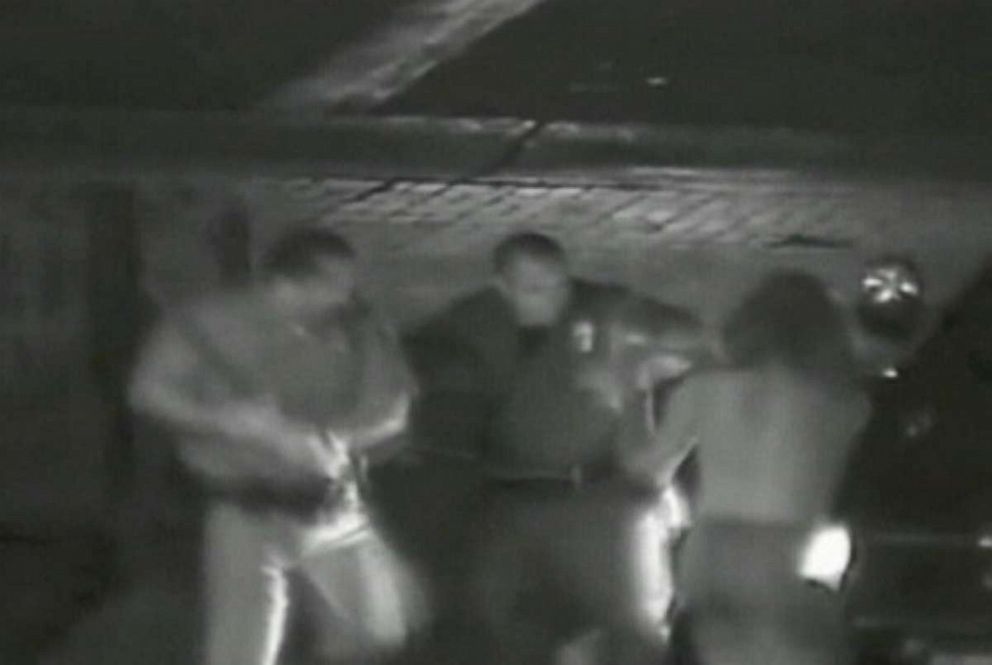
-- Kelly Thomas, a 37-year-old mentally ill homeless man, died on July 5, 2011, after officers received a report that he was allegedly trying to open car doors in Fullerton, California. During the encounter, a struggle erupted and five officers ended up holding Thomas down on the ground. The officers deployed stun guns on the man, who suffered from schizophrenia, and beat him with their fists and batons as he cried out "I can't breathe" and called for his "daddy" before passing out, according to Orange County prosecutors and security video. He died at a hospital five days later. An Orange County coroner reports concluded that Thomas died of "positional asphyxiation and blunt force trauma to the head." Three Fullerton police officers involved in the death were fired and two were tried on charges, including second-degree murder, manslaughter and excessive use of force. They were both acquitted by a jury of all charges in 2014. The city of Fullerton paid Thomas' family $3 million to settle a wrongful death lawsuit.
-- Nicholas Farah's death in 2019 came six years after 38-year-old Luis Solano's death under similar circumstances at the Clark County Detention Center in Las Vegas. Solano's death was also ruled a homicide due to positional asphyxia. Like Farah, Solano, who was arrested on suspicion of cocaine trafficking, had been placed in a restraint chair after he was moved to a psychiatric module at the jail and allegedly caused a disruption "creating a potentially dangerous situation for the officers and other inmates," Clark County District Attorney Steve Wolfson said in a 2014 statement. The officers involved in Solano's death were all cleared by Wolfson, who said "a thorough investigation indicated that officers did not use excessive force in their efforts to restrain him." In August 2018, seven months before Farah's death, the Las Vegas Metropolitan Police Department paid Solano's family $363,000 to settle a wrongful death suit.
Culture of policing
In the aftermath of the Floyd case, calls for detailed information to be released on police in-custody deaths have increased from politicians and activists baffled that such episodes keep occurring despite training and policies firmly in place in most police departments to prevent these types of in-custody deaths.
"You can train people as much as you want. You can train them every month on the proper way, the improper way, the potential deadly ways of restraining people. But what you can't change is the culture within a particular agency or police department and on top of the culture the resistance by officers to tell other officers what to do," said Brad Garrett, a former FBI agent and a contributor to ABC News.
"It really is a broader problem in that when you look at basically trying to turn the police around to a different way of thinking and a different way of acting, you still go back to this issue of do they actually think it's important and are they going to listen to anybody else," Garrett said. "Trying to change people who may or may not be inclined to change because of the insular way law enforcement functions and the culture of not telling another cop what to do, plays against this getting fixed."
He said most officers may be able to keep cool in controlled training environments, but a "small percentage" of them can allow circumstances to quickly escalate into using aggressive behavior out in the field as soon as a subject they come in contact with balks at doing what they order them to do.
"They get mad and say, 'We're the police. You're supposed to do what we tell you to do.' And when you don't, for some it's a justification to get really aggressive with a person," Garrett said. "And I think that happens, I think it happens a lot and how do you get that out of somebody's system is really difficult to do and I think it's probably not impossible but difficult to weed those people out when you hire them."




